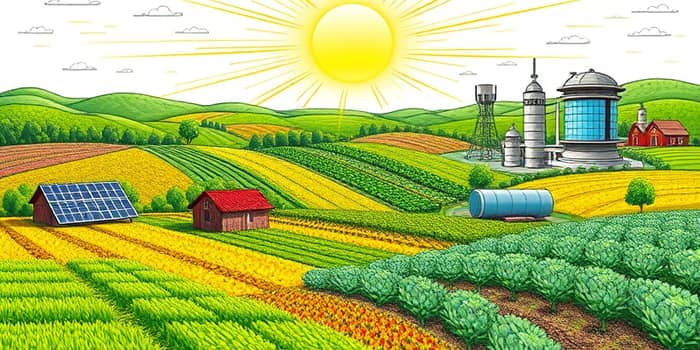
As global populations surge and environmental pressures mount, the urgency for a resilient food system has never been greater. Investors and innovators are looking to sustainable agriculture and alternative proteins as the cornerstones of tomorrow’s nutrition. This transformation promises not only to feed billions but also to protect the planet.
Modern farming is undergoing a profound shift, driven by a commitment to climate-smart and regenerative farming practices. Techniques such as no-till planting, cover cropping, and integrated pest management are becoming mainstream, improving soil health and crop yields while reducing greenhouse gas emissions.
AgroTech breakthroughs are at the heart of this evolution. From AI-powered sensors that monitor soil moisture in real time to automated irrigation systems that optimize water use, technology is enabling farmers to make data-driven decisions. Meanwhile, synthetic biology advances—biofertilizers, microbial biostimulants, and engineered microbes—are enhancing nutrient uptake and resilience.
The alternative protein market is expanding at an unprecedented pace, valued at $21.76 billion in 2024 and projected to reach $36.17 billion by 2030. With a compound annual growth rate of 8.84% to 10.4% between 2024 and 2030, this sector represents a fundamental shift in global protein consumption habits.
Innovation spans multiple platforms: precision fermentation, plant-based formulations, cellular agriculture, algae-based proteins, and insect-derived alternatives. Precision fermentation and cellular agriculture technologies offer the promise of replicating complex animal products—from steaks to seafood—with minimal environmental footprint. Plant-based staples continue to dominate consumer adoption, driven by health, taste, and sustainability considerations.
Shifting toward alternative proteins and sustainable agriculture delivers reducing land, water use, and emissions on a massive scale. Compared to conventional livestock, plant-based and cultured products can cut greenhouse gas emissions by up to 90% and water usage by 50% or more. These improvements play a critical role in mitigating climate change and preserving biodiversity.
On the economic front, the transition could generate $700 billion in economic value and create supporting millions of new green jobs by 2050. Analysts estimate 83 million jobs globally across farming, technology development, processing, and distribution. Public investment of roughly $10.1 billion annually in R&D and commercialization will accelerate breakthroughs and market adoption.
Traditional farmers are uniquely positioned to benefit from this evolution. By embracing sustainable practices and specialized crops, they can secure new revenue streams and reduce reliance on commodity markets.
These strategies not only diversify farm operations but also strengthen community ties. Local partnerships with processors and startups foster innovation hubs, enhancing traceability and quality control. Governments and financial institutions are responding by offering grants and loans tied to sustainable benchmarks, empowering farmers to invest in the necessary infrastructure.
For investors, a balanced portfolio that blends traditional agribusiness with AgTech and alternative protein ventures offers resilience and growth potential. ESG-focused funds are increasingly channeling capital toward climate-aligned farming and protein companies, satisfying both ethical mandates and return objectives.
Due diligence must account for regulatory frameworks, market maturity, and technology readiness. Partnerships with research institutions and startups can provide early access to disruptive innovations, while joint ventures with established food companies can accelerate commercialization and scaling.
Despite the promise, obstacles remain. Scaling production to achieve cost parity with conventional products is critical, particularly for cellular agriculture and precision fermentation. High capital expenditures and complex regulatory pathways can delay market entry.
Consumer acceptance is another hurdle. Taste, texture, and price must align with expectations shaped by traditional meat and dairy. Strategic marketing and transparent communication about nutritional and environmental benefits are essential to win hearts and wallets.
Policy frameworks and subsidies still favor conventional animal agriculture in many regions, complicating the transition for farmers and producers. Collaboration between policymakers, industry stakeholders, and advocacy groups will be key to rebalancing incentives.
Looking ahead, the intersection of sustainable agriculture and alternative proteins represents a structural shift in how food is produced, distributed, and consumed. Continued investment in R&D, infrastructure, and consumer education will be vital to maintaining momentum.
Public-private partnerships can bridge funding gaps, while standardized ESG metrics will enhance accountability and measurement of impact. As population growth pushes global food demand to 8.5 billion by 2030, the need for resilient, resource-efficient systems is paramount.
By embracing innovation and collaboration, stakeholders across the value chain can unlock the full potential of next-generation foods. The future of food is not just about feeding people; it’s about nourishing the planet and creating a prosperous, sustainable world for generations to come.
References













